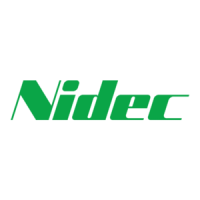K
Kristina MillerSep 4, 2025
What causes bus under voltage during running of Nidec DC Drives?
- WwrangelSep 4, 2025
A bus under voltage during the operation of Nidec DC Drives is caused by power grid low voltage, so check the input power source.

What causes bus under voltage during running of Nidec DC Drives?
A bus under voltage during the operation of Nidec DC Drives is caused by power grid low voltage, so check the input power source.
What to do if Nidec NE300-4T1320G/1600P-D DC Drives show ground fault?
If your Nidec DC Drives are indicating a ground fault, it could be due to a short circuit in one of the output phases. Check whether the electric motor insulation is weakening. Also, check whether the wiring between the frequency converter and the electric motor is damaged.
What to do if Nidec NE300-4T1320G/1600P-D DC Drives show load short-circuit?
If your Nidec DC Drives are displaying a load short-circuit error, check whether the electric motor coil is short circuit. If the inverting module IGBT is damaged, ask for the services from manufacturers.
What to do if Nidec NE300-4T1320G/1600P-D show output phase loss?
If your Nidec DC Drives are showing an output phase loss, check the U-V-W motor wiring. Also, if there is a serious unbalance in output, check the load.
What to do if Nidec NE300-4T1320G/1600P-D show input phase loss?
If your Nidec DC Drives are indicating an input phase loss, it means the input RST has phase loss or imbalance, so check input voltage.
| Category | DC Drives |
|---|---|
| Model | NE300-4T1320G/1600P-D |
| Cooling Method | Forced air cooling |
| Input Voltage | 380-480VAC |
| Protection Features | Overcurrent, Overvoltage, Undervoltage, Overtemperature, Short Circuit |
Covers critical safety guidelines for operating, installing, wiring, and maintaining the drive.
Core technical data including control modes, frequency settings, and performance metrics.
Guidance on selecting and applying braking resistors based on drive models.
Covers terminal configuration and essential precautions for main circuit wiring.
Details control terminal wiring, functions, and schematic diagrams.
Describes parameters essential for vector control mode.
Explains parameters for Voltage/Frequency (V/F) control.
Covers parameters for motor overload, voltage, and current protection.
Lists common faults, their possible causes, and recommended solutions.










